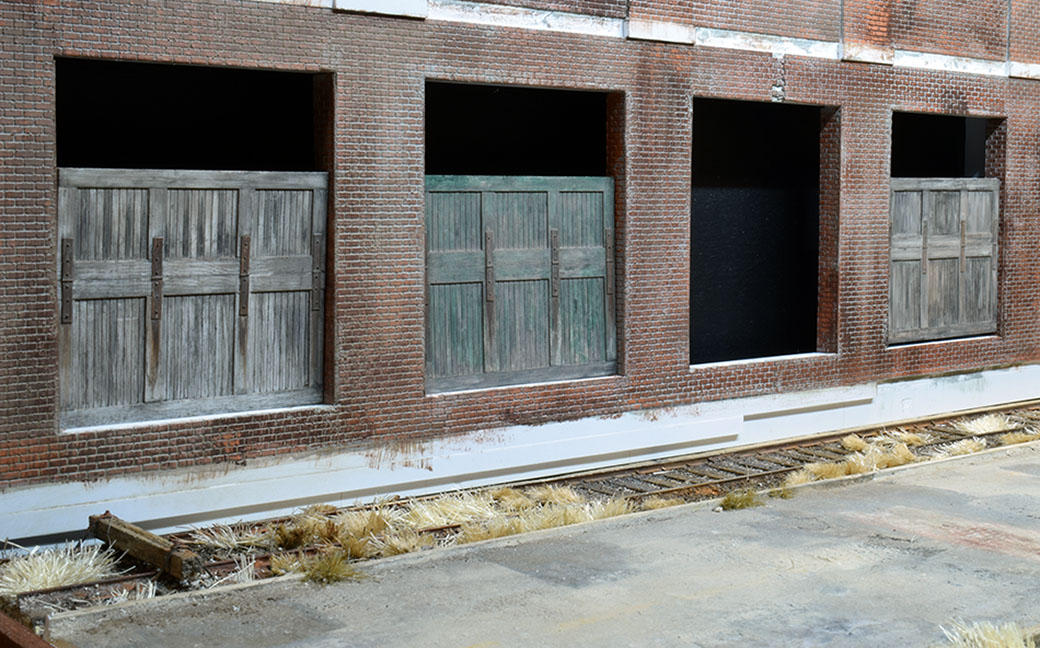
Workmanship of Risk
After a long hiatus I wanted to complete work on the warehouse doors for the 13th and North E cameo project. I found a stack of door blanks on the bench and set to work adding the rails and stiles. Everything was fine until I laid out the intermediate door stiles and discovered something was terribly off. Comparing the piece to a completed door revealed the new one was too narrow and then the reason why came flooding back: the panels I grabbed were the offcuts from the sheet material I cut the actual doors from. In simple English, I goofed. Despite that, the mistake wasn’t fatal, the time spent was minimal and the narrower blank makes a good practice piece for the finishing techniques. In that light, it’s just an example of the workmanship of risk.

In this photo the mistake is evident. Luckily, I caught it before I spent a lot of time making doors of the wrong size. The scrap door serves as a test bed for weathered wood and peeling paint effects on styrene. Although they look gaudy from the harsh light, the finished door on the bottom has a dead flat finish with subtle tones and transitions.
In the lead photo, I placed several doors temporarily to judge the impact of the finish. They await further trim and a transom window.
David Pye (1914-1993), was an accomplished wood turner, designer and Professor of Furniture Design at the Royal College of Art (London) from 1964-1974. He formulated the idea of the workmanship of risk, which refers to: “workmanship using any kind of technique or apparatus, in which the quality of the result is not predetermined, but depends on the judgment, dexterity and care which the maker exercises as he works (The Nature and Art of Workmanship, p. 20).*
Why Does This Matter?
My mistake resulted from not paying attention. Given the time lapse between work sessions, a few minutes spent organizing my mind would have saved time in the long run. As noted in Professor Pye’s definition, all the elements of workmanship of risk are present in scratchbuilding. Unlike a kit or ready-to-run product where the thinking and design has been done by another, in scratchbuilding we bring our skill and judgment along with our knowledge and who we are as a person to the work. As a result, such work is prone to errors from a lack of skill, a lazy attitude or an indifferent approach. Overcoming the internal and external challenges model building presents is the source of my enjoyment in this craft. Bringing all of myself to the work is just as rewarding (sometimes more) as having the completed model.
Regards,
Mike
*Information on David Pye sourced from Wikipedia.
Mike – Another insightful observation on your part. And by the way, I like the appearance of your building’s brickwork.
Thank you. The color of the brickwork came out better than I hoped for.
Mike